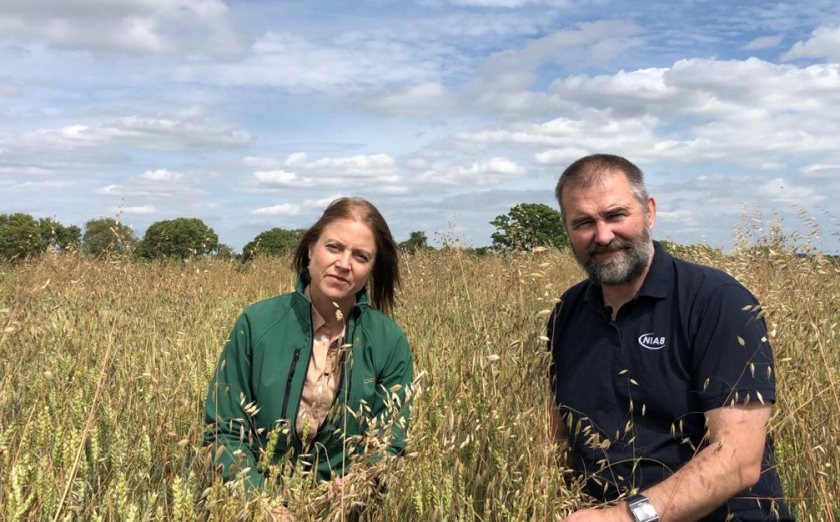
Growers concerned about herbicide-resistant wild oat populations are being urged by experts to consider getting seed samples tested to help plan the most effective control strategies.
Early July is an ideal time to collect samples once seed has matured, and testing will show whether herbicide resistance is present, which actives are affected, and also which wild oat species are dominant.
Hutchinsons agronomist, Michael Shemilt, says understanding the resistance status and population profile is essential to determine the best management techniques, cultivations, and herbicide choices, for this very competitive grassweed.
He warns that where herbicide resistance does occur, like other grass-weeds, it can get to unmanageable levels relatively quickly, unless appropriate measures are employed.
“Unlike black-grass, seeds remain viable in the soil for many years, so there’s always a risk problems re-emerge in the future," Mr Shemilt says.
Resistance risks are greater in rotations dominated by cereal cropping, where there is more reliance on a limited range of chemistry.
ADAS resistance testing over 13 years shows that where resistance occurs, it is most likely to be to fenoxaprop, followed by clodinafop, mesosulfuron+iodosulfuron, and pinoxaden.
Recent years have also found a few populations resistant to pyroxsulam, but so far, there has been little resistance to cycloxydim.
While herbicide resistance is a genuine threat that must be identified and managed appropriately, Mr Shemilt and other experts stress that it remains far less widespread than for other grassweeds, notably black-grass or Italian ryegrass, and other factors may cause poor control in the field.
Indeed, 68% of wild oat samples tested by ADAS were sensitive to herbicides, and in another survey of around 100 samples by NIAB, sponsored by Life Scientific, in summer 2020, 85-90% were susceptible to the key actives pinoxaden and iodosulfuron + mesosulfuron.
Cross resistance to two types of chemistry at the same time was also very rare, notes Life Scientific’s Ruth Stanley.
Even if one type of resistance is confirmed (e.g. to fops and dims), it is highly likely other types of chemistry (e.g. ALS inhibitors) will still be effective.
Aside from resistance, poor herbicide application or timing is one potential reason for inadequate control in the field.
Another factor in recent years is the move away from ALS-inhibiting chemistry (e.g. mesosulfuron + iodosulfuron) for black-grass control, due to resistance concerns, says Mrs Stanley.
“Although the efficacy of such chemistry against black-grass has declined, it was still doing a good job on wild oats, so as people stopped using it, more problems started to appear.”
The focus on black-grass control, and a shift towards minimal tillage systems, may also have contributed to more wild oat issues, especially as the weeds need tackling in different ways, she adds.
There are two main wild oat species in the UK; Common/Spring wild oats (Avena fatua) is the most prevalent type in many areas, and Winter wild oats (Avena sterilis subspecies ludoviciana), which although are less common, are becoming more widespread.
The two species look similar, but are very different in several ways, notably their germination patterns, explains NIAB’s John Cussans.
Winter wild oats predominantly germinate in the autumn/winter, while common wild oats are mainly spring germinating. In both cases, a small proportion (typically around 30%) will emerge outside the main period.
Cropping patterns heavily influence the species found in the field, with autumn/winter cropping generally favouring more winter-germinating wild oats, and vice versa.
“Unlike for black-grass, changing the rotation to include more spring cropping, for example, simply shifts the balance of the population mix and does little to control wild oats.”
Delaying cultivations as long as possible after harvest can help reduce population pressure, as freshly-shed seeds are eaten by birds and other natural predators, Mr Cussans continues.
Others may germinate, or be lost to fungal attack. In contrast, incorporating fresh seed could induce dormancy.
Wild oats have a complicated dormancy mechanism, so encouraging germination with stale seedbeds can have an effect, but is likely to be less effective than for weeds such as black-grass, he adds.
